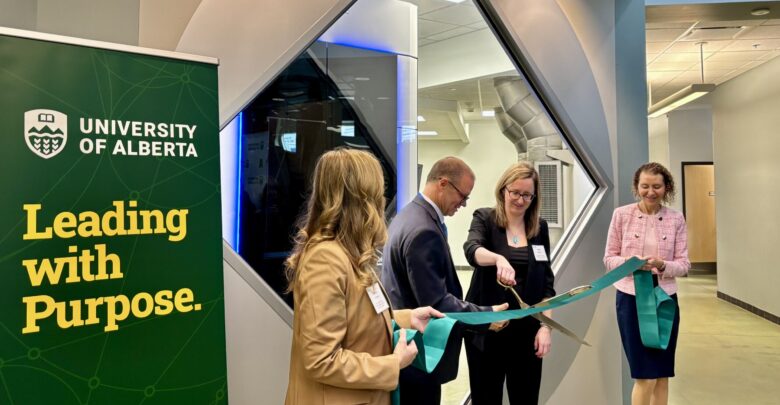U of A unveils new Cryo-EM facility
U of A announces new facility with cryo-electron microscopic technology capable of speeding up medical discoveries.
 Fernanda Campana Omori
Fernanda Campana OmoriOn October 8, the University of Alberta opened a facility with one of five cryo-electron microscopes in Canada.
The $20 million Alberta Cryo-EM facility was funded by the Government of Alberta and its technology and innovation incentives.
The Thermo Fisher Titan Krios G4 microscope allows for detailed studies into biological processes. The microscope facilitates the discovery of human diseases and the development of medical treatments.
During the inauguration, Matthias Götte, a professor in the department of medical microbiology and immunology and director of Striving for Pandemic Preparedness — The Alberta Research Consortium (SPP-ARC), stated that the new facility will allow the U of A to make “significant contributions to treatment and prevention of infectious diseases.”
“[The technology is not restricted] to pandemic preparedness, infectious diseases, and so forth. We can use it for neurogenitive diseases, to better understand cancer processes, drugs, and preventative measures,” Götte said.
New health-care facility will significantly improve Alberta’s scientific innovation capacity
The cryo-electron microscope, awarded the 2017 Nobel Prize in chemistry, allows doctors and researchers to “make images of biomolecules such as proteins, enzymes, DNA, RNA and so forth,” Götte said.
“This knowledge will provide with a detailed understanding of biological processes in both healthy and diseased states.”
“This technology will enable [the U of A] to respond efficiently to ongoing emergent viral threats, and this includes influenza, [because] we can generate data very quickly,” Götte added.
Hilary Faulkner, assistant deputy minister (technology and innovation), stated that Cryo-EM facility represents “one of the world’s most advanced cryo-electron microscopes.”
“With this infrastructure, Alberta is significantly strengthening its life sciences innovation capacity, taking a leading role in innovation and innovation health research,” Faulkner said.
“This facility will help save lives and improve health outcomes … the core of Cryo-EM puts Alberta on par with the leading world research hubs and ensures that our researchers and innovators have the tools they need to compete globally,” Faulkner added.
According to Faulkner, the facility will directly impact the growth of Alberta’s innovation ecosystem, and help diversify the economy.
“This is a proud moment for the U of A, and for all of us who believe in the power of science and innovation. It exemplifies what we can achieve when government, academia, and industry partners work together towards a common goal,” Faulkner said.
“This isn’t just a new piece of infrastructure, it’s a game changer,” Fayek says
Aminah Robinson Fayek, vice-president (research) and professor in the civil and environmental engineering department, emphasized how pivotal this moment is for health research at the U of A.
“This isn’t just a new piece of infrastructure, it’s a game changer that will fundamentally redefine the future of drug discovery and viral research in our province,” Robinson Fayek said.
Additionally, Joanne Lemieux, professor of biochemistry, discussed the effectiveness of this technology for the treatment of oncological diseases.
“Both my team and other teams have already used the facilities and can attest that within 24 hours of bringing our samples here, we’ve had structures that were able to gain insight into drug development,” Lemieux said.
“We have a project looking at drug candidates for leukemia, and [with the microscope], we can see precisely how that drug [will] fit into the active site of the protein,” Lemieux added.




